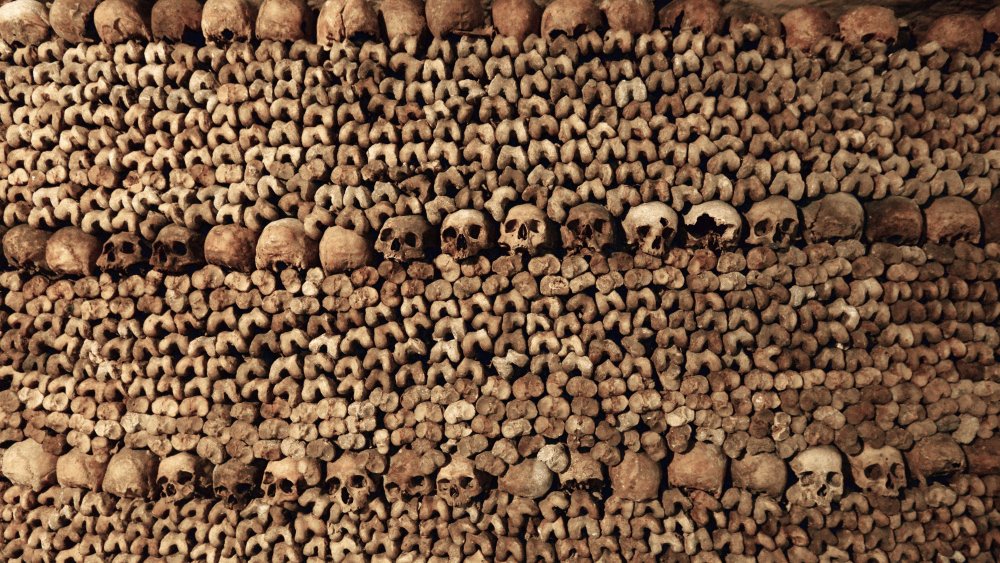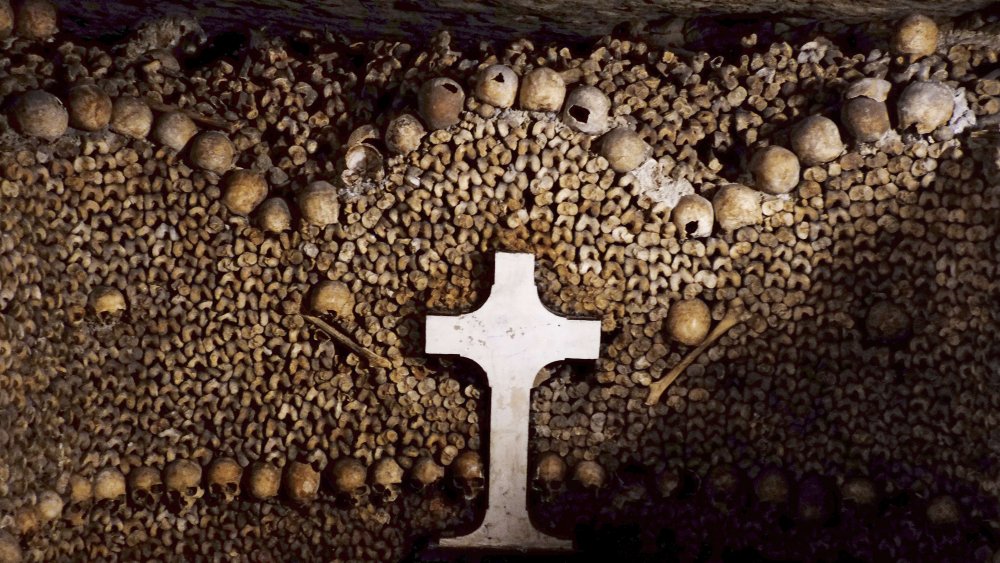Here's How Many Bodies Are Buried In The Paris Catacombs
Some five stories beneath the most populous city in France lies a grim reminder of man's capacity to expand beyond his means: a series of tunnels, stacked floor to ceiling with the remains of the dead, piled piece by piece into a bleak and obsessively organized architectural tribute to mortality's ever-present nature. Les Catacombes de Paris are among the most solemnifying modern tourist attractions to which a person can still purchase a "skip the line" pass for an extra eleven euros. They have been described as "an empire of death," and by one disappointed Google reviewer as "not willing to let me bring my stroller even though it clearly would have fit."
The history of the Catacombs of Paris is long and objectively yucky. They started out as tunnels connecting the area's limestone quarries. As so often happens, what started out as the pursuit of rock led to something decidedly more metal.
Totally boned
According to the Smithsonian, the problems started in the 17th century. More and more people flocked to Paris to live and, pretty dependably, die. But the city only had so much space, and finding a place to put all of those pesky human remains became a quandry. As graveyards filled to bursting, the church pushed back against the possibility of moving the bodies. It got so bad that perfume shops complained about the smell, and the whole thing came to a head in 1780 when a particularly rainy season washed a wave of decomposing corpses into the streets.
And so, beginning in 1786, the graveyards were emptied, and the dead were moved into the tunnels. The buildup of bodies was substantial: Paris has a history stretching back to the Roman empire. In all, it took nearly 30 years to complete the project, and by the time it was done, between 6 and 7 million corpses had been relocated.

